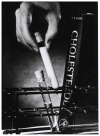Hypertriglyceridemia-Induced Acute Pancreatitis-The Milky Way Constellation-The Seven-Year Experience of a Large Tertiary Centre
- PMID: 38893632
- PMCID: PMC11172297
- DOI: 10.3390/diagnostics14111105
Hypertriglyceridemia-Induced Acute Pancreatitis-The Milky Way Constellation-The Seven-Year Experience of a Large Tertiary Centre
Abstract
(1) Background: Hypertriglyceridemia (HTG) is a well-known metabolic condition associated with an increased risk of acute pancreatitis. In this study, we tried to establish whether there are any significant disparities concerning recurrence rate, intensive care unit (ICU) admission, hospital (ICU and total) length of stay (LoS), morphology, severity and age between HTG-induced acute pancreatitis and any other known cause of pancreatitis (OAP). (2) Methods: The research was a retrospective unicentric cohort study, using information from the Bucharest Acute Pancreatitis Index (BUC-API) registry, a database of 1855 consecutive cases of acute pancreatitis. (3) Results: We found a weak association between HTG-AP and recurrence. The HTG-AP patients were younger, with a median of 44.5 years, and had a longer ICU stay than the OAP patients. In addition, we identified that the HTG-AP patients were more likely to develop acute peripancreatic fluid collection (APFC), to be admitted in ICU, to have a more severe course of disease and to be cared for in a gastroenterology ward. (4) Conclusions: Hypertriglyceridemia-induced APs have a more severe course. The typical patient with HTG-AP is a middle-aged male, with previous episodes of AP, admitted in the gastroenterology ward, with a longer ICU stay and longer length of hospitalization, more likely to evolve in a severe acute pancreatitis (SAP) and with a higher probability of developing APFC.
Keywords: ICU; acute pancreatitis; hypertriglyceridemia; outcome; recurrence; severity.
Conflict of interest statement
The authors declare no conflicts of interest. The funders had no role in the design of the study; in the collection, analyses, or interpretation of data; in the writing of the manuscript; or in the decision to publish the results.
Figures
References
-
- Jankowski C. Pioneers of Light and Sound. Capstone; Mankato, MN, USA: 2009.
-
- Allen T.M., Viera A.J. Milk-Like Serum Suggests Markedly Elevated Triglycerides. Am. Fam. Physician. 2004;70:821. - PubMed
-
- Iannuzzi J.P., King J.A., Leong J.H., Quan J., Windsor J.W., Tanyingoh D., Coward S., Forbes N., Heitman S.J., Shaheen A.-A., et al. Global Incidence of Acute Pancreatitis Is Increasing Over Time: A Systematic Review and Meta-Analysis. Gastroenterology. 2022;162:122–134. doi: 10.1053/j.gastro.2021.09.043. - DOI - PubMed
-
- Garg S.K., Sarvepalli S., Campbell J.P., Obaitan I., Singh D., Bazerbachi F., Singh R., Sanaka M.R.M. Incidence, Admission Rates, and Predictors, and Economic Burden of Adult Emergency Visits for Acute Pancreatitis: Data from the National Emergency Department Sample, 2006 to 2012. J. Clin. Gastroenterol. 2019;53:220–225. doi: 10.1097/MCG.0000000000001030. - DOI - PubMed
LinkOut - more resources
Full Text Sources
Miscellaneous


